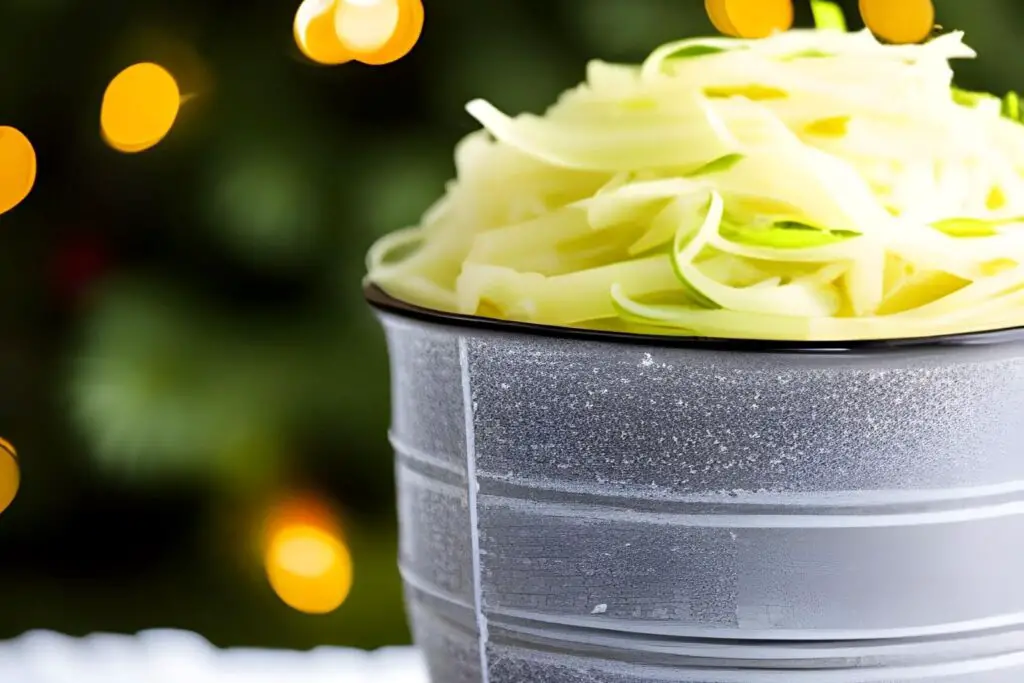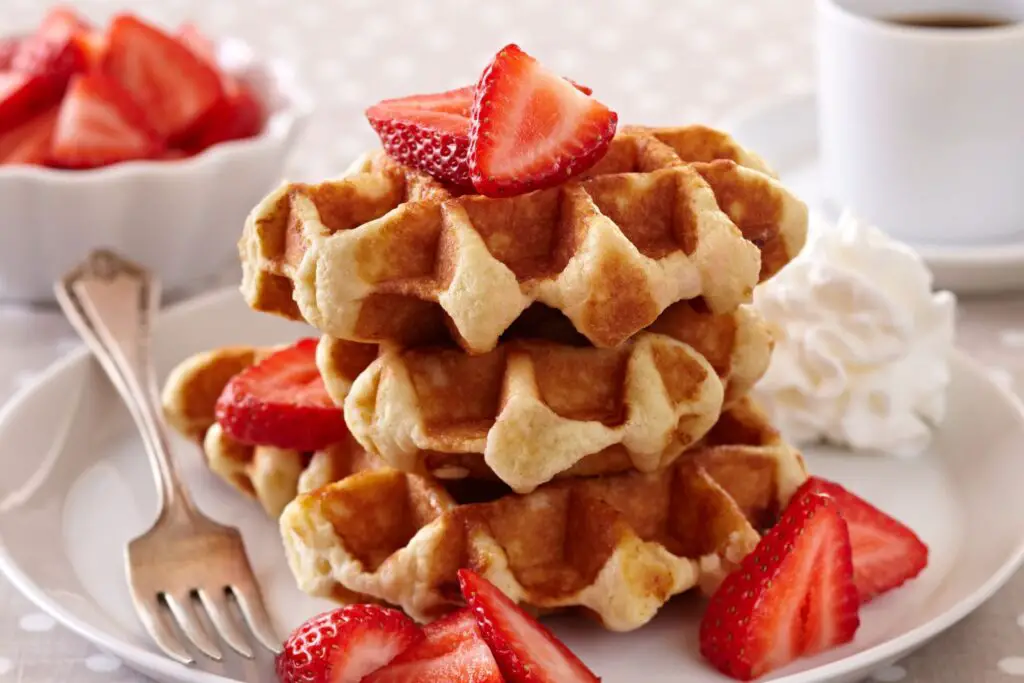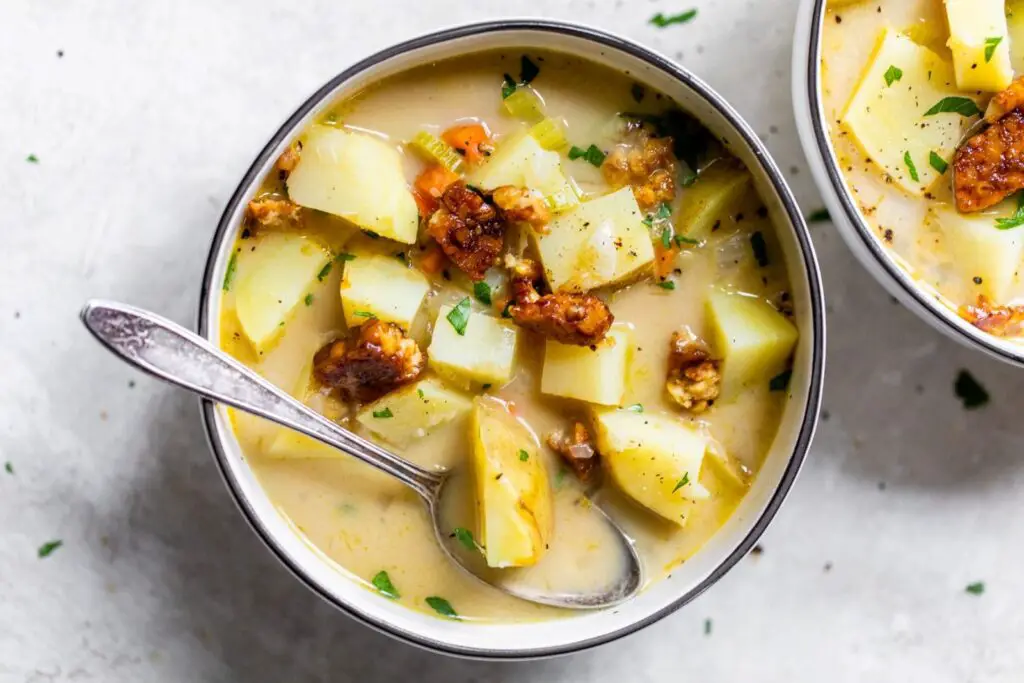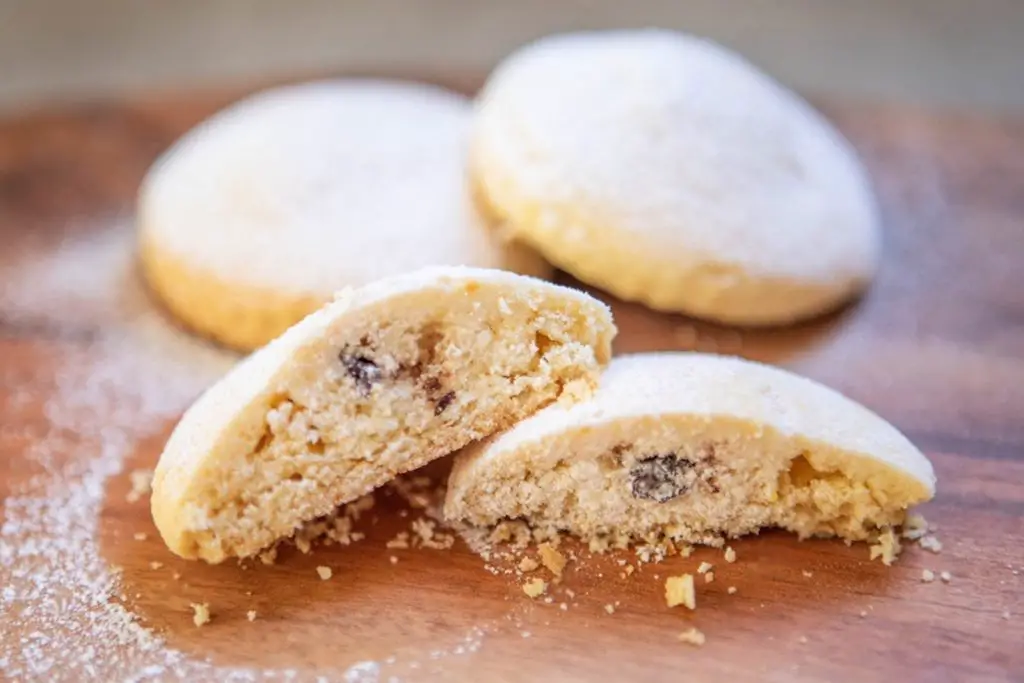
Christmas cake, a cherished tradition during the holiday season, is a rich and indulgent dessert that brings joy and festivity to the table. This fruitcake is packed with an assortment of dried fruits, nuts, and warming spices, all soaked in spirits to enhance its flavor. The cake is typically baked well in advance to allow the flavors to meld and develop over time. However, if you want to prepare your Christmas cake ahead of time or have leftovers, freezing is a wonderful option. Freezing Christmas cake helps preserve its moistness and flavors, ensuring that it remains delicious and ready to be enjoyed whenever the festive spirit strikes. In this guide, we will explore the proper techniques for freezing Christmas cake, including wrapping and storage methods, so you can savor the taste of this beloved dessert throughout the year. Join us as we unravel the secrets of freezing Christmas cake and discover the convenience of having a slice of holiday joy at your fingertips, no matter the season.
Here are the simple steps to freeze a christmas cake:
Step 1: Select a Fresh Christmas Cake
When it comes to freezing Christmas cake, it’s important to start with a fresh cake that has been recently baked. Selecting a freshly baked cake ensures that it is at its best quality and flavor, making it more enjoyable when you eventually thaw and serve it.
To begin, you can either bake the Christmas cake yourself or purchase one from a bakery or store. If you decide to bake it yourself, follow a trusted recipe and allow the cake to cool completely before moving on to the freezing process. Cooling is crucial because it allows the cake to set and stabilize, preventing it from becoming mushy or losing its shape when frozen.
Step 2: Wrap the Cake Securely
Once you have selected a fresh Christmas cake, wrap it securely to protect it during the freezing process. Wrapping the cake tightly with multiple layers of plastic wrap serves two important purposes: it prevents air from reaching the cake and helps maintain its moisture and flavor.
Air exposure can cause the cake to dry out and become stale. By tightly wrapping the cake, you create a barrier that minimizes air circulation, preserving the cake’s moisture content and preventing it from drying out. This is particularly important for Christmas cakes, as they often contain rich ingredients like dried fruits and nuts that can lose their moisture when exposed to air.
Using several layers of plastic wrap provides an extra level of protection. Make sure to completely cover the cake from all sides, ensuring there are no gaps or openings where air can seep in. It’s also important to press the plastic wrap firmly against the surface of the cake to create a tight seal.
Step 3: Protect with Aluminum Foil
Once you have wrapped the Christmas cake securely in plastic wrap, provide an additional layer of protection by covering it with aluminum foil. This extra barrier serves two important purposes: it guards against freezer burn and helps to insulate the cake.
Freezer burn is a common issue that occurs when food is exposed to air and moisture in the freezer. It can result in the cake’s texture becoming dry, and it can also affect its flavor. By covering the wrapped cake with aluminum foil, you create an additional shield that helps prevent air from reaching the cake’s surface, reducing the risk of freezer burn.
Furthermore, aluminum foil helps to insulate the cake and maintain a more consistent temperature during freezing. This insulation minimizes temperature fluctuations and ensures that the cake freezes evenly. It also provides some protection against physical damage that may occur if the cake is bumped or jostled in the freezer.
When applying the aluminum foil, make sure it completely covers the cake and overlaps the plastic wrap. This will create a tight seal and further enhance the cake’s protection against air exposure and temperature changes.
Step 4: Place in an Airtight Container
Once you have wrapped the Christmas cake in plastic wrap and protected it with aluminum foil, the next step is to transfer it to an airtight container. This step is crucial for providing an extra layer of protection and maintaining the cake’s shape during freezing.
An airtight container acts as a barrier against air and moisture, preventing them from reaching the cake. It helps to preserve the cake’s moisture content and flavor while also safeguarding it from any potential odors or flavors from other foods in the freezer.
When selecting an airtight container, choose one that is large enough to accommodate the cake without compressing it. It’s important to allow some space around the cake to maintain its shape and prevent any deformation. A container with a secure lid ensures that the cake is well-sealed and protected.
Before placing the wrapped cake inside the container, check that there are no gaps or openings that could compromise the cake’s protection. If necessary, you can use additional layers of plastic wrap or parchment paper to fill any gaps or create a snug fit.
Step 5: Label and Date the Container
After placing the wrapped Christmas cake in an airtight container, it’s important to label the container with essential information. By using a permanent marker, you can clearly indicate the contents of the container and the date when the cake was frozen. This step is crucial for organization and ensuring that you can easily identify the cake later on.
Labeling the container with the contents helps avoid confusion, especially if you have multiple items in the freezer. Simply write “Christmas Cake” or any other description that clearly indicates what is inside the container. This way, you can quickly locate the cake without having to open and inspect every container.
In addition to the contents, it’s important to include the date of freezing on the label. This allows you to keep track of how long the cake has been stored in the freezer. It’s recommended to follow general guidelines for freezing baked goods, as the quality may start to deteriorate after a certain period of time. By noting the date, you can ensure that you consume the cake within a reasonable timeframe to enjoy it at its best.
When labeling the container, make sure to write the information clearly and prominently. Choose a visible spot on the container, such as the lid or side, so that the label remains visible even if the container is stacked or stored in a crowded freezer.
Step 6: Freeze the Christmas Cake
Once you have properly labeled and dated the container holding the wrapped Christmas cake, it’s time to place it in the freezer for the freezing process. Proper handling during this step is essential to maintain the cake’s shape, texture, and decorations.
When placing the container in the freezer, ensure that it is positioned on a flat surface. This helps prevent any distortion or damage to the cake’s decorations, as well as maintains the overall shape of the cake. Placing it on a flat surface also helps prevent any accidental spillage or movement that could impact the cake.
Ideally, find a spot in your freezer where the container can be placed undisturbed and remain upright. Avoid stacking other items on top of the cake container to prevent any unnecessary pressure or weight that could deform the cake or damage its decorations.
It’s important to note that the freezing process takes time, so it’s recommended to leave the cake in the freezer for several hours or overnight. This allows sufficient time for the cake to freeze completely.
How long can christmas cake last in the freezer?
Christmas cake can last in the freezer for up to 3 months while maintaining its quality. However, it is recommended to consume it within 1-2 months for the best taste and texture. Proper packaging and storage conditions, such as using airtight containers and maintaining a constant freezer temperature, can help extend the cake’s freezer storage life.
Step 7: Thaw the Frozen Christmas Cake
After successfully freezing the Christmas cake, the time comes to thaw it when you’re ready to enjoy it. Thawing the cake properly is crucial to ensure that its texture, taste, and overall quality are preserved. The recommended method for thawing a frozen Christmas cake is to let it thaw gradually in the refrigerator.
To begin the thawing process, remove the container with the frozen cake from the freezer. It’s important to thaw the cake in the refrigerator rather than at room temperature to prevent rapid temperature changes that can negatively affect the cake’s texture.
Place the container with the frozen cake in the refrigerator and allow it to thaw slowly. The cold temperature of the refrigerator ensures that the cake thaws evenly and gently without causing any drastic temperature fluctuations.
Thawing the cake in the refrigerator also helps prevent condensation from forming on the cake’s surface. If the cake is thawed at room temperature, the temperature difference between the cake and the surroundings can lead to moisture buildup, resulting in a soggy or sticky texture. Thawing in the refrigerator minimizes this risk, preserving the cake’s texture and taste.
The time required for thawing can vary depending on the size and thickness of the cake. It’s generally recommended to allow the cake to thaw overnight or for several hours until it is fully thawed and reaches a desired serving temperature.
Other related questions
Can you refreeze christmas cake?
It is generally not recommended to refreeze Christmas cake once it has been thawed. Refreezing can negatively impact the cake’s texture, taste, and overall quality, resulting in a less enjoyable eating experience. It is best to consume the thawed Christmas cake within a reasonable timeframe to ensure optimal freshness and to avoid the need for refreezing.
How do I know if the christmas cake has gone bad after being frozen?
To determine if a Christmas cake has gone bad after being frozen, look for signs of spoilage. Check for any mold growth, off smells, or a significant change in texture, such as extreme dryness or sogginess. If the cake appears discolored, has an unpleasant odor, or tastes noticeably different, it is likely spoiled and should not be consumed. When in doubt, it is best to err on the side of caution and discard the cake to ensure food safety.
Are there any special considerations for freezing a vegan or dairy-free christmas cake?
When freezing a vegan or dairy-free Christmas cake, there are a few special considerations to keep in mind. Firstly, ensure that all the ingredients used in the cake are suitable for freezing, as some plant-based alternatives may have different freezing properties. Secondly, package the cake in an airtight container or wrap it tightly to prevent freezer burn and maintain its texture. Lastly, consider the thawing process, allowing the cake to thaw gradually in the refrigerator to preserve its moisture and flavors.
Are there any differences in freezing techniques for different types of christmas cakes (e.g., with or without alcohol)?
There can be slight differences in freezing techniques for different types of Christmas cakes, particularly those with or without alcohol. Christmas cakes that contain alcohol tend to have better moisture retention and preservation. When freezing a Christmas cake with alcohol, it is recommended to wrap it tightly in plastic wrap, followed by a layer of aluminum foil or place it in an airtight container to prevent the alcohol from evaporating. For Christmas cakes without alcohol, similar wrapping methods can be used to maintain moisture.
Are there any special considerations for freezing fruitcake or traditional christmas cake?
Yes, there are special considerations for freezing fruitcake or traditional Christmas cake. Fruitcakes and traditional Christmas cakes often contain dried fruits and nuts, which can have a longer shelf life. To freeze fruit cake or Christmas cake, it is important to wrap them tightly in plastic wrap or aluminum foil to prevent freezer burn. If the cake is already iced or decorated, it is recommended to wrap it in an additional layer of plastic wrap or foil to protect the icing or decorations.Proper packaging and sealing are crucial to maintain the moisture, flavors, and textures of the fruitcake or traditional Christmas cake during freezing and thawing.








